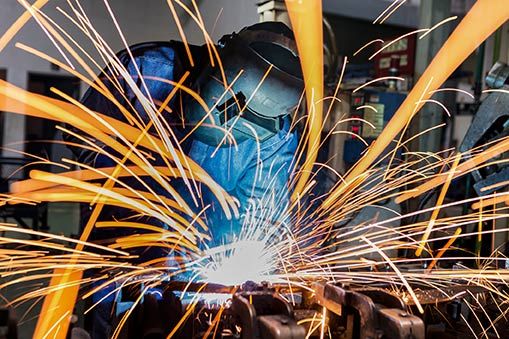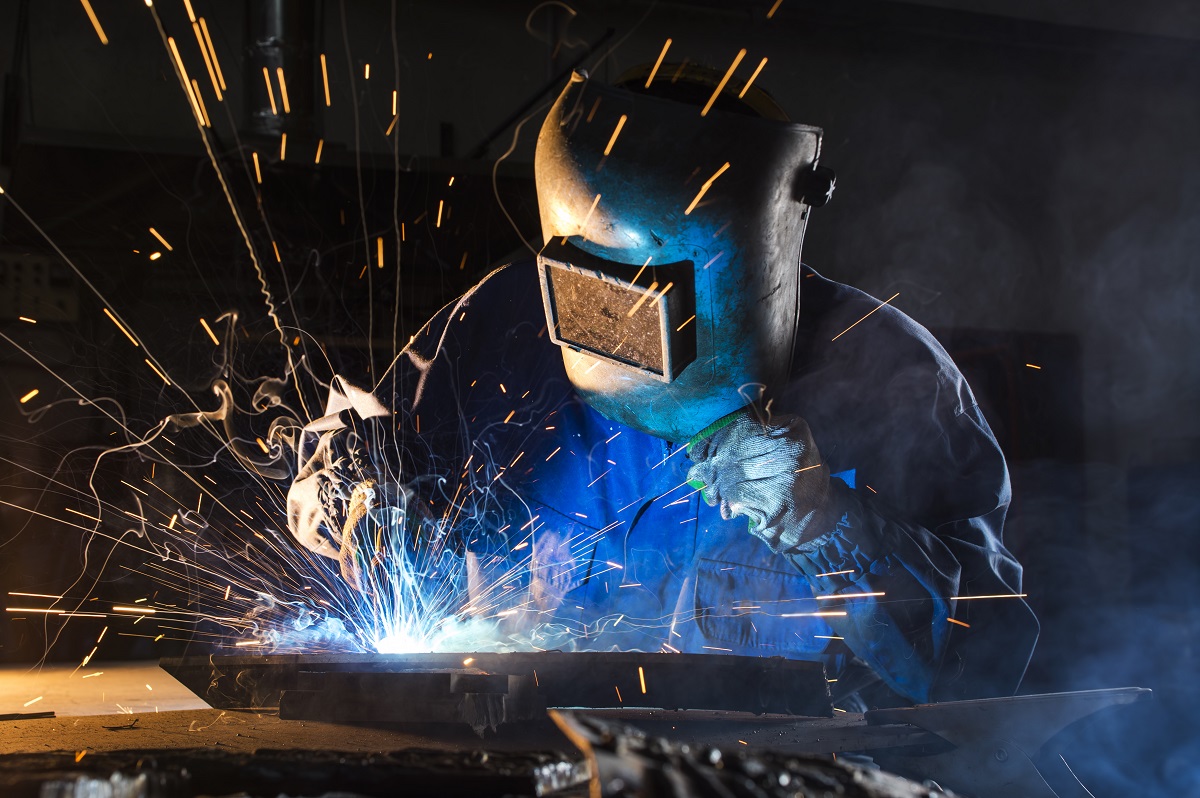Usual Welding Repair Service Issues and Exactly How to Address Them Effectively
Welding repair work typically encounter a variety of problems that can threaten the stability of the end product. Usual problems consist of poor infiltration, porosity, and imbalance, amongst others. Each issue offers special challenges that call for certain techniques for resolution. Understanding these problems is crucial for welders aiming to enhance their outcomes and skills. This conversation will certainly explore these common welding repair service concerns and efficient approaches to address them.
Inadequate Penetration
Insufficient penetration happens when the weld steel stops working to fully fuse with the base material, causing weak joints and possible structural failings. This concern commonly stems from not enough heat input, wrong electrode angle, or improper welding rate. Welders might experience insufficient penetration because of a mistake of the needed parameters for a details material density or type. Furthermore, contamination on the base product's surface can impede efficient bonding, worsening the problem. To deal with poor penetration, welders need to ensure appropriate settings on their equipment and keep a clean job surface area. Regular assessment of welds is suggested to recognize any type of deficiencies early, permitting for prompt improvements and the avoidance of endangered structural honesty in welded settings up.
Porosity
Porosity is a common issue in welded joints that shows up as little gas bubbles caught within the weld metal. This problem can endanger the honesty of the weld, resulting in reduced toughness and potential failing under anxiety. Montana Mobile Welding and Repair Belgrade. Porosity normally emerges from contamination, wetness, or improper welding methods, which allow gases to get away right into the liquified weld pool. To deal with porosity, welders ought to guarantee correct surface preparation, preserve a clean functioning setting, and utilize suitable welding specifications. Additionally, picking the best filler product and securing gas can alleviate gas entrapment. Normal assessment and testing of welds can assist identify porosity early, guaranteeing timely restorative activities are taken, thereby maintaining the high quality and reliability of the bonded structure
Misalignment
Misalignment in welding can develop from various factors, consisting of inappropriate setup and thermal development. Comprehending the source is essential for reliable resolution. Several adjustment techniques are offered to realign components and ensure architectural honesty.
Sources of Imbalance
Welding imbalance often originates from a selection of underlying concerns that can endanger structural stability. One key cause is improper fit-up of parts before welding, which can lead to gaps and uneven surface areas. Variations in thermal expansion during the welding process can also result in distortion, especially if the materials being signed up with have different coefficients of development. Furthermore, inadequate fixturing and securing may fall short to hold elements firmly in location, bring about activity throughout welding. Badly maintained devices, consisting of welding equipments and devices, might present incongruities in the weld bead, more adding to misalignment. Finally, driver error, coming from inadequate training or experience, can likewise play a considerable function in producing misaligned welds.
Modification Methods Readily Available
Addressing misalignment successfully requires a mix of corrective strategies tailored to the certain problems at hand. One usual approach is making use of jigs or components to hold parts in the appropriate setting throughout welding, making certain consistent alignment. Furthermore, preheating the products can help lower distortion and boost fit-up. For significant imbalance, mechanical adjustment strategies, such as making use of hydraulic jacks or clamps, can be utilized to remedy the placement prior to welding. Post-weld warm therapy may also be needed to ease tensions triggered by imbalance. Lastly, cautious assessment and adjustment throughout the configuration phase can stop imbalance problems from coming to be significant problems, promoting a smoother welding process and improving total structural honesty.
Distortion
Distortion is a typical obstacle in welding that can occur from various variables, consisting of irregular cooling and heating. Understanding the causes of distortion is important for carrying out reliable avoidance strategies. Resolving this concern not only boosts structural stability yet likewise improves the total quality of the weld.
Reasons for Distortion
When subjected to the extreme heat of welding, materials frequently undertake adjustments that can result in distortion. This sensation mainly arises from thermal development and contraction throughout the welding procedure. As the weld area heats up, the material expands; upon air conditioning, it acquires, which can produce internal tensions. Furthermore, uneven heating throughout a workpiece can aggravate these stresses, leading to warping or bending. The kind of material also plays a look at this website significant role; steels with varying thermal conductivity and coefficients of expansion may respond differently, leading to uncertain distortions. Inadequate joint style and poor fixturing can contribute to imbalance during welding, raising the likelihood of distortion. Understanding these reasons is essential for reliable welding repair work and avoidance methods.
Avoidance Techniques
Effective prevention techniques for distortion throughout welding emphasis on managing warm input and making sure proper joint layout. Preserving a consistent warm input aids to minimize thermal development and tightening, which can cause distortion. Making use of methods such as pre-heating the work surface can additionally reduce the temperature gradient, promoting consistent home heating. In addition, picking suitable joint styles, such as T-joints or lap joints, can boost stability and lower anxiety concentrations. Applying appropriate fixturing to protect the workpieces in area further help in preserving alignment throughout the welding process. Staggered welding series can disperse heat a lot more uniformly, preventing localized distortion. By using these methods, welders can considerably lower the likelihood of distortion and boost the total top quality of their welds.
Fracturing
Splitting is a typical issue encountered in welding repair work, frequently resulting from numerous variables such as inappropriate cooling rates, product choice, or insufficient joint preparation. The occurrence of splits can considerably compromise the integrity of the weld, bring about possible failures throughout procedure. To address this problem, welders should first evaluate the origin, guaranteeing that products work and appropriately picked for the details application. Additionally, regulating the air conditioning price throughout the welding process is important; quick cooling can induce stress and cause breaking. Correct joint style and prep work also add to reducing the risk. Executing these techniques can improve weld top quality and durability, inevitably minimizing the probability of cracking in completed weldments.

Incomplete Combination
A significant concern in welding repair services is heliarc welding incomplete blend, which happens when the weld steel does not sufficiently bond with the base material or previous weld passes - Montana Mobile Welding and Repair Fabrication. This problem can lead to weak points in the joint, potentially endangering the stability of the welded framework. Elements contributing to incomplete combination consist of not enough warmth input, improper welding method, and contamination of the surface areas being joined. To address this problem effectively, welders need to guarantee correct pre-weld cleansing and surface prep work, as well as adjust their welding criteria to achieve appropriate penetration and combination. Routine evaluation during the welding procedure can additionally aid determine insufficient blend early, permitting prompt restorative procedures to boost the total high quality of the weld
Overheating
While welding repair services can enhance structural integrity, overheating presents a significant obstacle that can bring about product degradation. Excessive warm during welding can change the mechanical residential or commercial properties of metals, resulting in decreased toughness, increased brittleness, and warping. This phenomenon is particularly crucial in high-stress applications where structural integrity is vital. Recognizing overheating can involve aesthetic evaluations for staining or distortion, along with keeping an eye on temperature during the welding process. To reduce the dangers connected with getting too hot, welders should use appropriate techniques, such as regulating heat input, readjusting traveling rate, and using appropriate filler products. Additionally, carrying out pre- and post-weld warm treatments can aid restore product buildings and improve the overall quality of the repair service, making certain lasting performance and safety.
Regularly Asked Inquiries
What Are the Typical Signs of a Welding Issue?

Just How Can I Evaluate My Welds for Top quality?
To evaluate welds for high quality, one can make use of aesthetic assessments, ultrasonic testing, and radiographic techniques. Each strategy assures architectural honesty, recognizes problems, and validates adherence to defined requirements, ultimately boosting the reliability of the welded joints.
What Safety Safety Measures Should I Take While Welding?
When welding, one need to prioritize safety by using appropriate personal safety devices, guaranteeing proper ventilation, safeguarding flammable materials away, preserving a clean office, and knowing environments to avoid accidents and injuries.
Can I Fix a Weld Without Redoing the Entire Joint?
Fixing a weld without remodeling the whole joint is possible, depending upon the damage (Fabrication). Techniques such as grinding, adding filler material, or utilizing a welding procedure can efficiently deal with specific imperfections while protecting the bordering framework
What Devices Are Necessary for Reliable Welding Repair Works?
Necessary devices for efficient welding fixings consist of a welding machine, wire brush, mill, safety equipment, clamps, and filler materials. Each device plays a vital function in making sure quality and safety throughout the fixing process. Porosity commonly emerges from contamination, wetness, or inappropriate welding strategies, which allow gases to escape into the molten weld swimming pool. Improperly maintained tools, including welding makers and devices, might present incongruities in the weld grain, further adding to imbalance. When subjected to the extreme heat of welding, products commonly undertake modifications that can lead to distortion. Splitting is an usual problem run into in welding repair work, commonly resulting from numerous variables such as improper cooling prices, material selection, or insufficient joint prep work. A considerable concern in welding repair work is insufficient fusion, which takes place when the weld steel does not effectively bond with the base product or previous weld passes.